All images courtesy of Marc Storace

Even after a music career spanning over half a century, Marc Storace shows no signs of slowing down.
Storace, best known as the vocalist of the renowned Swiss hard rock act Krokus, released his debut solo album, Live and Let Live, in December under the name STORACE.
With Live and Let Live, the Maltese-born frontman shows off his artistic flair, delivering a diversified ten-track rocker that occasionally — and delightfully — delves into various styles. The title track itself, co-written with Swiss guitarist Charly Preissel twenty years ago, is an inspiring hard rock anthem that carries a powerful message that is especially relevant in today’s world.
Recorded at Powerplay Studios in Switzerland, Live and Let Live, released under the label Cream of Rock, also features Cyrill Camenzind (guitar), Massimo Buonano (drums), and Marco Blochlinger (bass).
To purchase a copy of Live and Let Live, click here.
For more on Marc Storace, be sure to check out my career-spanning interview with the iconic frontman after checking out our most recent conversation, where we discussed Live and Let Live.
Andrew:
Marc, thanks for taking the time, my friend. Congratulations on the release of Live and Let Live. How has the response been thus far?
Marc:
Well, actually, I’m pretty humbled and elated that it got such good reactions and reviews so far. I’m happy that it’s being seen as I wanted it to be. This wasn’t trying to copy Krokus and fill the gap that Krokus leaves behind, it’s actually trying to create stuff that’s coming deep within me, together with good songwriting partners, and going my way into the future because Krokus came to an end. That’s how most of us see it, so it’s really pleasing to know. So, I can just go ahead and carry on with the next steps, and that is to do the upcoming package tour in Switzerland and hopefully, we’re gonna have a nice little tour set up in the USA or maybe Canada, towards the fall. But I’m saying this without having actual facts and figures because it’s all being checked out; it’s an expensive thing, and I don’t have a record company behind me with a big budget. It’s all coming out of the pockets of my manager and myself. I wanted to do this for so long, so it’s all been worth it so far. And that’s great.
Andrew:
The first-ever solo effort of your career embodies classic rock’s essence and is filled with passion. What was the blueprint for this album?
Marc:
It goes back lots of years. I wanted to do a solo album, but never found the time to do it because Krokus was always coming back, and when it wasn’t Krokus, it was other stuff that I had lined up. For example, going on tour with Rock Meets Classic, or even doing projects like Warrior in Los Angeles, and the two albums I did with This is Rock up in Cologne, and so on and so forth. And recently, the Sing My Song thing, which we recorded on the island of Gran Canaria for Swiss television. Through that, actually, I met the two guys that have Powerplay Studios, and they said, “You know, if you’re into doing a solo thing now that Krokus is closing shop, you’re welcome to use our studio. Let’s write a few songs together, and we’ll produce you.” And that’s what happened; I went into Powerplay Studios and recorded an album with Massimo [Buonanno] and Cyrill [Camenzind] producing, recording, engineering, and even songwriting with me.
But the whole thing goes back twenty years ago. The title song, “Live and Let Live,” was written here, close to where I live, just ten minutes away in Basel City, together with a guitarist friend of mine called Charly Preissel. For two years, we wrote two-and-a-half hours of music of various things — from heavy rock, to soft rock, to ballads, acoustic stuff, and so on. “Live and Let Live” was actually one song out of three, which was like the length of one whole vinyl side. You know, like in the old days, you do one whole thing and call it, “In-A-Gadda-Da-Vida,” for example. So, we had this one whole B or A-side called “Barbarians,” and “Live and Let Live” is actually the middle part of it. So, maybe, later on, I’ll be able to record the whole thing and even involve Charlie. He’s in the video for “Live and Let Live,” as the only musician standing next to me.
Going back to 2019, when I came back from Gran Canaria with Cyrill and Massi, I did some karaoke stuff with my young daughter, Giuliana; she’s got a fantastic, sensitive, sweet voice; we did Beatles duets and so forth. They were shown on television during the lockdown. After that was over, I told her, “Now we have to stop, otherwise you’ll overexpose yourself and you don’t have a CD to follow up. So, let’s leave it at that, and I’ll start work on my CD now.” So, I started working with this guy in England in Newcastle, his name is Adrian Fisher, he’s a multi-instrumentalist; he does fantastic demos. I met him through LinkedIn, and he’s a guitar player with a progressive band. So, he sent me ideas. I said, “Yeah, go ahead. If you have stuff that you think will suit me, just send it over. Nothing to lose, and if I like it, it’s great.”
So, he sent me, must have been twenty songs, and three of them are on the album. This second single and second video of the album, called “Lady of the Night,” was written with Adrian Fisher. I made the demos with Adrian, like I did with Charlie for the other stuff, and went a step further with Cyrill and Massimo of Powerplay Studios. They picked the demos they liked, and I had my choice. It was pretty much like democratic because I like to have people’s feedback, especially if it’s people I like and trust. It wasn’t easy picking the ten songs to record — in the end, we had eleven — just in case. We took it from there, and from the demo sessions, we went into rearranging sessions to make everything fit and create that red line that is supposed to run through the whole album. Then we took a break, and they went off and did the next production of Sing My Song in Gran Canaria with other musicians. In the meantime, I got comfortable and finished lyrics and had time to re-write and really work out my melodies and actually cut it down to a minimum; I believe in less is more.

Andrew:
Did Live and Let Live have a specific direction in terms of songwriting?
Marc:
Well, the songwriting direction was, from the start, rock. Then, you have to go into which department of rock. I said I wouldn’t mind having a touch of keyboards in there a little bit, so, it’s not just guitar rock — in the ballads, especially — and maybe a little acoustic in there, which you hear on the song “Paradise.” Some people say there’s some country in there; some others say there’s some west coast. I just see Led Zeppelin, you know? But anyway, basically, it came out to be heavy, melodic, hard rock. That’s what it is. The second single, which is out now as a video, “Lady of the Night,” is actually tuned down one whole note, like Sabbath. The music sounds really dark, but it’s melodic, it rolls, and the theme is very current. It’s about health care people — I wrote the lyrics during the lockdown — imagining I was a guy whole had COVID and was in the hospital and tried to imagine the agony one was going through and how alone you must feel, and how dependent you feel on the health care people. The night shift, especially; when it’s dark outside and stuff, and you feel you’re in the hands of other people. If they don’t turn you over in bed, for example, you’ll get more than bed sores. Stuff like that went through my head.
Actually, it’s this guy who’s going through COVID, and at the same time, he feels the love of maybe this one nurse that is especially fond of him. So, there’s this romantic thing happening at the same time. And then he heals, so he’s looking at a brave new world, and counting his losses, and ready to start again. And who knows, maybe he took her out on a date and bought her dinner? Maybe they’re gonna have kids now. [Laughs]. You know what I mean? It’s fantasy, but it’s based on reality, I would say.
Andrew:
What were some of the challenges you encountered recording Live and Let Live amid a global pandemic, Marc?
Marc:
The first thing is that you don’t get together as often as you want and jam things out like a band. But then again, I thought, “Well, I have to get used to this. This isn’t Krokus anymore.” We don’t meet in our cellar and jam ideas out, we work via our computers; we send ideas to and from like I did with Adrian. Adrian, out in Newcastle, was sending me new ideas the way he saw them. I didn’t show Adrian any side of my creativity until the whole album was recorded. It was a big surprise. So, he was already signing papers for the performing rights, which I sent to him, with the album titles on them, and he hadn’t yet heard the songs. He hadn’t heard the finished songs, poor guy, but he was really pleased with the final results. I mean, this was one thing, working this way, but I was used to it, actually. Working with Warrior — they were based in Los Angeles — and it was the same thing. I didn’t go there and spend three months writing and recording; they wrote and sent me the playbacks, so to speak, and more or less what they were going for, and we wrote lyrics together because the internet is fast. Basically, it was more working in the studio with masks, and this whole, tight security thing — which was actually needed — which was the downer. But everybody was in the same soup, so I wasn’t complaining; I was just happy that ideas were coming and we were moving forward, and I wasn’t stagnating at home doing nothing.
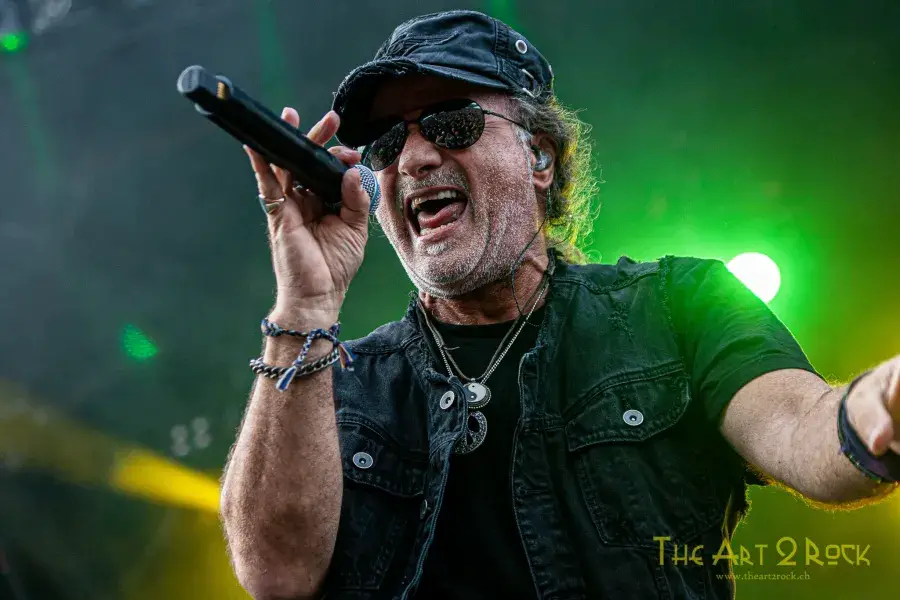
Andrew:
I would be remiss if I didn’t mention Massimo and Cyrill, who played drums and guitar on the album, respectively. Could you provide a little background on them?
Marc:
I was invited to take part in this TV production, which is a series called Sing My Song. There are seven singers, six of them sit on the couch, and there’s a band opposite and an empty microphone. One singer, the seventh one, always, sings songs to the other guys who are sitting on the sofa, and nobody knows what he’s gonna sing until the last minute. These songs are rearranged beforehand in the studio, and this is when I met Cyrill and Massimo first, when I got the pick of songs; I did my pick and cut it down to the ones I was gonna sing at the production. I went to the studio and immediately we got on so well together, worked so fast, and I even sang a song in Mundart — which is Swiss dialect — which I had never done before; my tongue doesn’t swing around so well to Swiss dialect. You know, I was born in Malta, I lived in London, I lived in the USA, and although I speak almost perfect Swiss German, singing is a totally different ballgame.
So, I took the challenge — I really wanted to do that — I really wanted to show everybody here, as well as in Switzerland, that, “Hey, I have a Swiss passport next to my Maltese passport.” Anyway, there are these other songs from the other guys, so it took more time to rearrange the songs than actually singing them. So, that’s how I got to know them. I built trust in these guys, and I loved their efficiency; they worked very hard. We have to try to make every song fit Marc Storace, and what I represent, you know? And there was one song which I sang only with piano, which was like stepping out of my actual image again. But then again, when a singer sings along with a piano, it could be any genre. So then, there was a couple of heavy rock songs — we did “Hellraiser,” for example — because every singer could choose one song which he wrote himself and sing it himself. But all the other songs have to be from the other guys, from whichever part of their history, and we have to rearrange those songs. Even change the language; I changed the language on one song, which was in Swiss dialect, and I translated the whole thing into English. And it worked well.
Andrew:
What is your plan for supporting the release?
Marc:
Well, I go off on a Swiss package tour on the 18th of March, and then I’m doing some headline shows between dates. For example, in Kofmehl in Solothurn, which is the birthplace of Krokus. So, we kick off on the 18th of March, and they’re announced on my new website, www.storace.ch. Or if you go on my Facebook site, www.facebook.com/marcstorace. Then comes a biggie, I’m playing with my band together with the Scorpions; opening up for my old mates, the Scorpions. Back in the 70s, my progressive rock band, TEA, recorded with the producer of the Scorpions, Dieter Dierks, in Cologne. So, on the 21st of May, I see the guys again and get to open for them. It’s an honor for me, and this is in the Hallenstadion in Zurich — the rock temple — the sacred, holy ground of rock. And then, the next big thing is I get to see my friend Alice Cooper on the 18th of June at the Rock the Ring festival. There are loads of bands, it’s three or four days long and well-organized.
I’m also — well, I say I’m working on — but it’s actually my ex-TEA manager who moved to the USA like one-thousand years ago, he’s living in Denver, and he’s setting something up with one of the first booking agencies Krokus had in the USA called DNA in Detroit. Their accountant was called Mark Hyman, all the others died, God rest their souls. Mark is still alive and now he’s running his own booking agency, and he’s out booking a tour for my Storace band. And I’m hoping to tour the USA and Canada in the fall, so there are big plans. Although I’ve been in the business for so long, it’s back to square one almost. But it’s great; as long as it’s fun, I’ll carry on doing it.
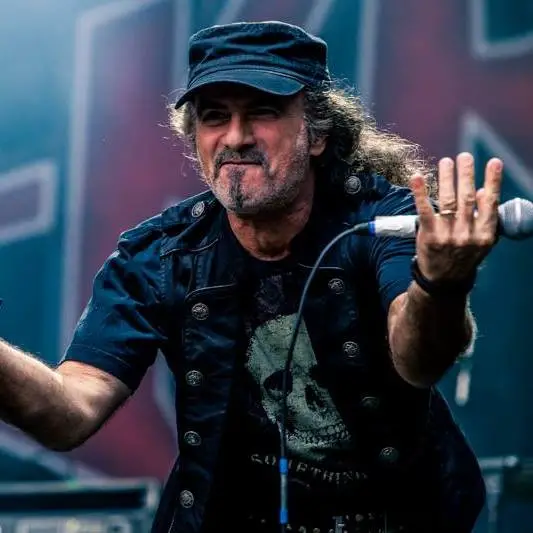
Andrew:
Have there been any new developments concerning the documentary since we last spoke?
Marc:
Well, the last time we talked, I told you we had to pull out all the stops because of COVID. We wanted to travel and document a lot of stuff, which is abroad. As soon as we got a chance last November, we flew down to Malta — where I was born and raised — and we recorded with an old friend of mine who was a nightclub owner, and he knew the scene from when we were young. We went to my parent’s old house and the street and the bar across the church. The bar, for me, was so influential; it had this jukebox full of rock ‘n’ roll, from Fats Domino, to Chuck Berry and Elvis, and then The Beatles, and going on to The Kinks, and even Mamas & The Papas. I left before they had Led Zeppelin in there. The young guys stopped going, and I don’t know what happened. And, you know, this place is like on the crossroads — on the corner — and on the other corner opposite is a parish church. So, I used to stand in the middle, on this manhole, which we used when we were playing rounders — rounders is the English version of baseball — but vis-à-vis opposite the bar there’s this church, so it’s like standing between heaven and hell! [Laughs]. The guys with the leather jackets and girls with their ponytails and polka dot dresses dancing to the jukebox, and the parish priests on the other side looking down in horror. [Laughs]. And we, the young kids who weren’t allowed to go in there, sitting on the doorstep across the road, eating ice cream whatever season it was, and taking in the virus of rock ‘n’ roll subconsciously. All these memories came by, and I organized that my folks came over to the hotel we were staying in and got them into the film. It’s only going to be five minutes long in the end; I don’t wanna bore the fans by going in too deep.
I even visited the first-ever place where I picked up a microphone and sang into a microphone with a band. It was the neighborhood band, and I knew they were there and wanted to go because I was interested in becoming a bass player myself and wanted to grab the bass and play. Anthony Bernard had this old Hofner bass like Paul McCartney; it was amazing. Then the cliché thing happened; their singer was sick, and they asked me if I would sing. They knew I had this vast repertoire of lyrics in my head and songs because that was my hobby, and they asked me to sit in and sing a little bit. The guy didn’t recover, and they said, “Well, would you sing at the party? You’re gonna earn a couple of bucks.” I said, “Wow, okay! Cool.” I was pretty nervous, first time ever singing in front of people; it was this big birthday party in Ramel Buildings, which is in Balluta Bay, close to the water polo pitch that I used to visit in the summer almost daily. It worked out, I got off on it and they got off, and they asked me to stay on. They said, “We think you’re a better singer.” … “Oh, yeah?!” I was only fourteen. Things never changed after that.

Interested in learning more about Marc Storace? Hit the link below:
Be sure to check out the full archives of Shredful Compositions, by Andrew DiCecco, here: https://vinylwritermusic.wordpress.com/shredful-compositions-archives/
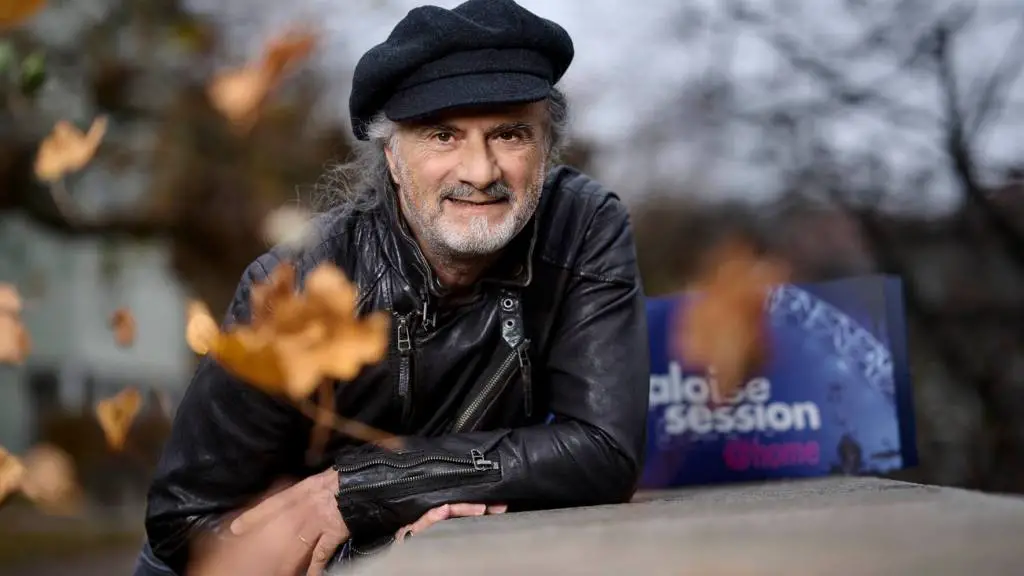
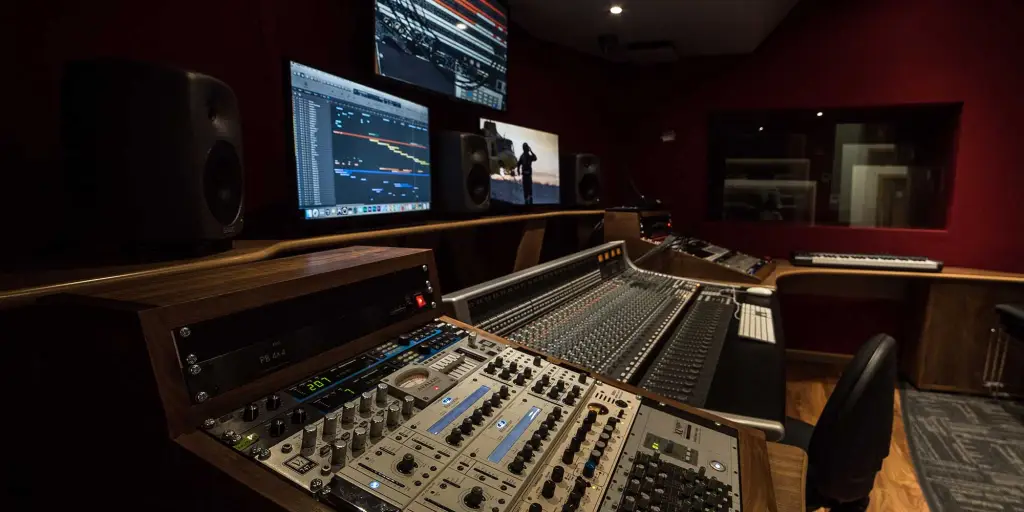

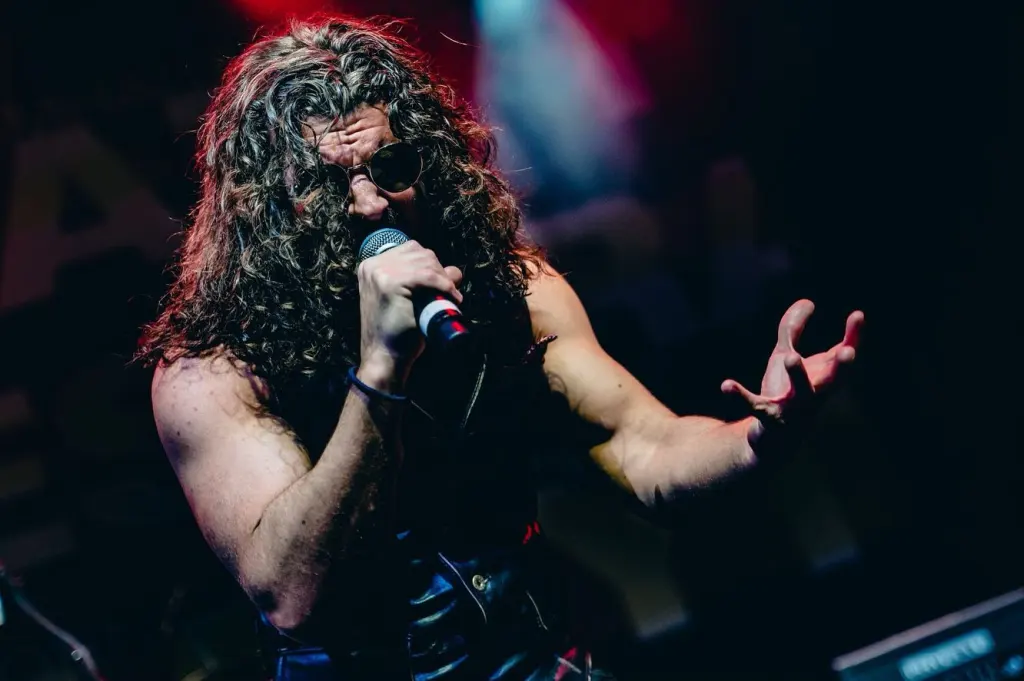
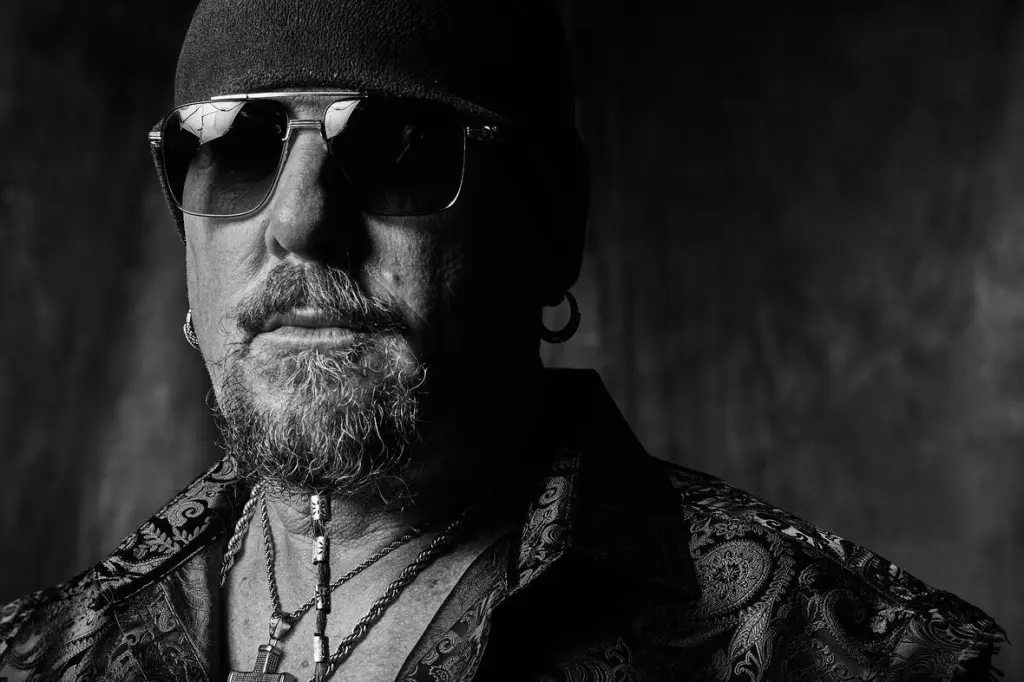
Leave a Reply